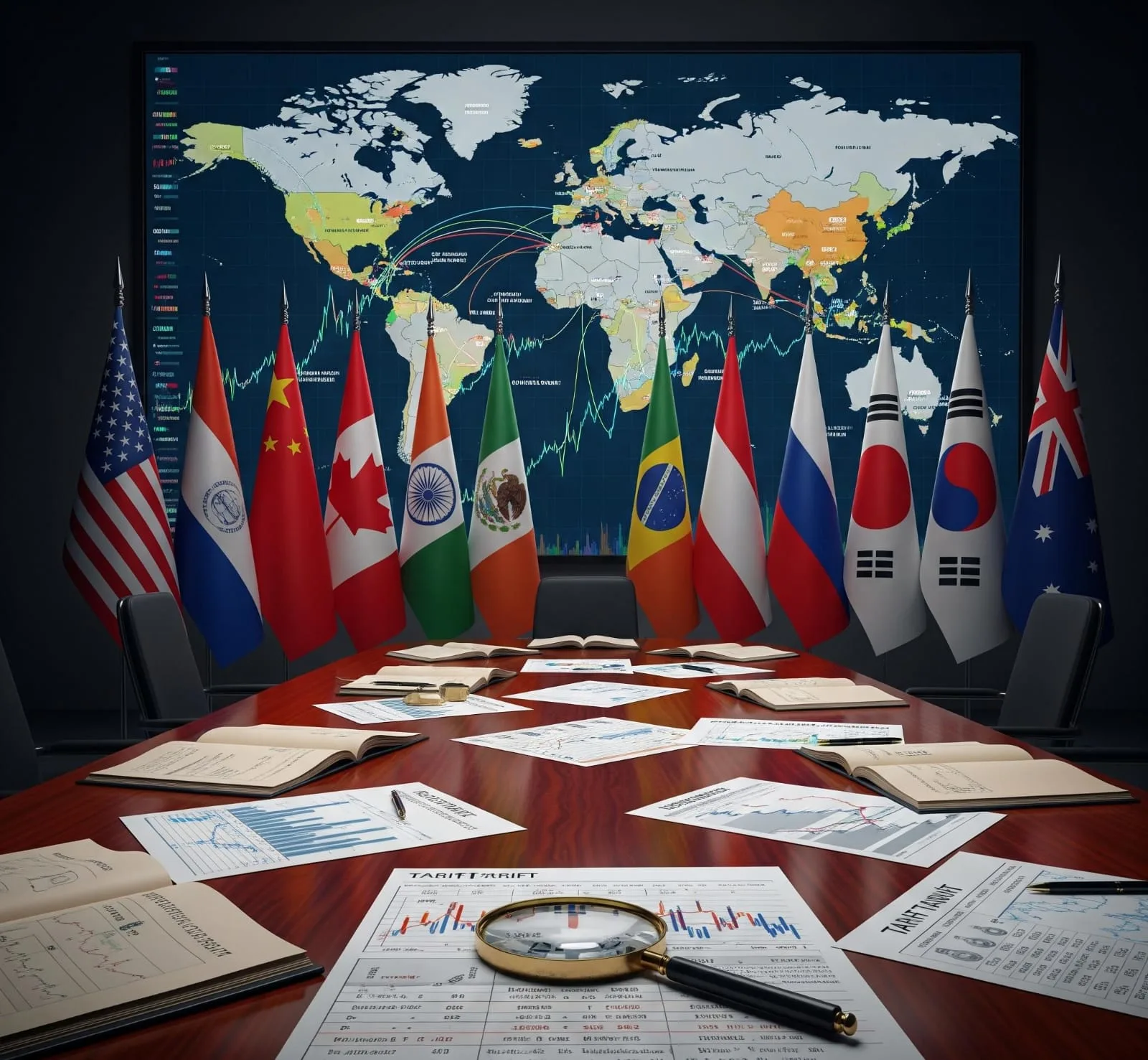
Overview
As former President Donald Trump’s August 1, 2025 tariff deadline approaches, global markets are bracing for disruption. While some countries have reached new trade deals with the United States, many remain in limbo or face steep tariffs. Even key allies risk economic fallout as negotiations stall or become entangled in political disputes.
1. Deadline & Legal Challenges
- Deadline: August 1, 2025 – Trump insists it is final: “No more extensions.”
- Legal Hurdle: A U.S. federal appeals court is set to hear a case challenging Trump’s authority to impose the tariffs just hours before they are scheduled to take effect.
2. Countries Facing New or Increased Tariffs
Brazil
- Proposed Tariff: 50%
- Reason: Political tensions related to ex-president Bolsonaro.
- Response: President Lula warns of a "lose-lose" scenario and criticizes Trump's approach.
India
- Proposed Tariff: 25% base + additional penalties.
- Reason: Arms and energy deals with Russia.
- Comment: Trump calls India a "friend" but cites a "massive" trade imbalance.
Mexico
- Proposed Tariff: 30%
- Reason: U.S. claims insufficient efforts to curb drug trafficking.
- Status: President Claudia Sheinbaum hopes to finalize an agreement before deadline.
Canada
- Tariffs Already Imposed:
- 25% on auto parts (March)
- 50% on steel & aluminium (June)
- Additional Threat: 35% on goods outside USMCA.
- Political Tension: Canada's stance on Palestine cited as a barrier.
China
- Status: Talks continue, deadline postponed.
- Response: China imposed retaliatory tariffs and restricted exports of rare earth materials.
- Outlook: No clear resolution.
3. Countries with Partial or Framework Trade Agreements
Although deals were struck, these agreements involve higher tariffs than pre-2025 levels, often in exchange for major U.S. investments or purchases.
South Korea
- Tariff: 15%
- Concessions: $350B investment in the U.S., $100B in energy purchases.
European Union
- Tariff: 15% on cars, pharmaceuticals, semiconductors.
- EU Commitment: $750B in U.S. energy purchases.
- Criticism: EU officials say the deal is unbalanced and harmful.
Japan
- Tariff: 15% on exports including automobiles.
- Additional Duties: 50% on steel and aluminium.
- Investment: $550B pledged in U.S. economy.
Philippines
- Tariff: 19%
- Key Exports Affected: Hi-tech products, apparel.
United Kingdom
- Base Tariff: 10%
- Steel/Aluminium Tariff: 25% (under negotiation)
- Concessions: Opened market to U.S. ethanol and beef.
Vietnam
- Tariff:
- 20% on general exports
- 40% on transshipments (to avoid trade evasion)
- Benefit: No U.S. tariffs on American exports to Vietnam.
Indonesia
- Tariff: 19%
- Concessions: Tariff-free access for U.S. goods, energy and industrial deals.
Pakistan
- Threatened Tariff: 29%
- Outcome: Reduced duties in exchange for U.S. support in oil development.
4. Countries in Limbo (No Deal, No Tariff Yet)
- Australia
- New Zealand
- Taiwan
These close U.S. allies await clarity on their trade status. They have not signed agreements but are not yet facing direct tariff threats.
Conclusion
The looming August 1 tariff deadline underlines the unpredictability of Trump’s trade policy. While some countries have secured deals—albeit with higher tariffs—others face steep levies or remain uncertain. The global economic landscape may shift significantly depending on last-minute court rulings and political maneuvering.